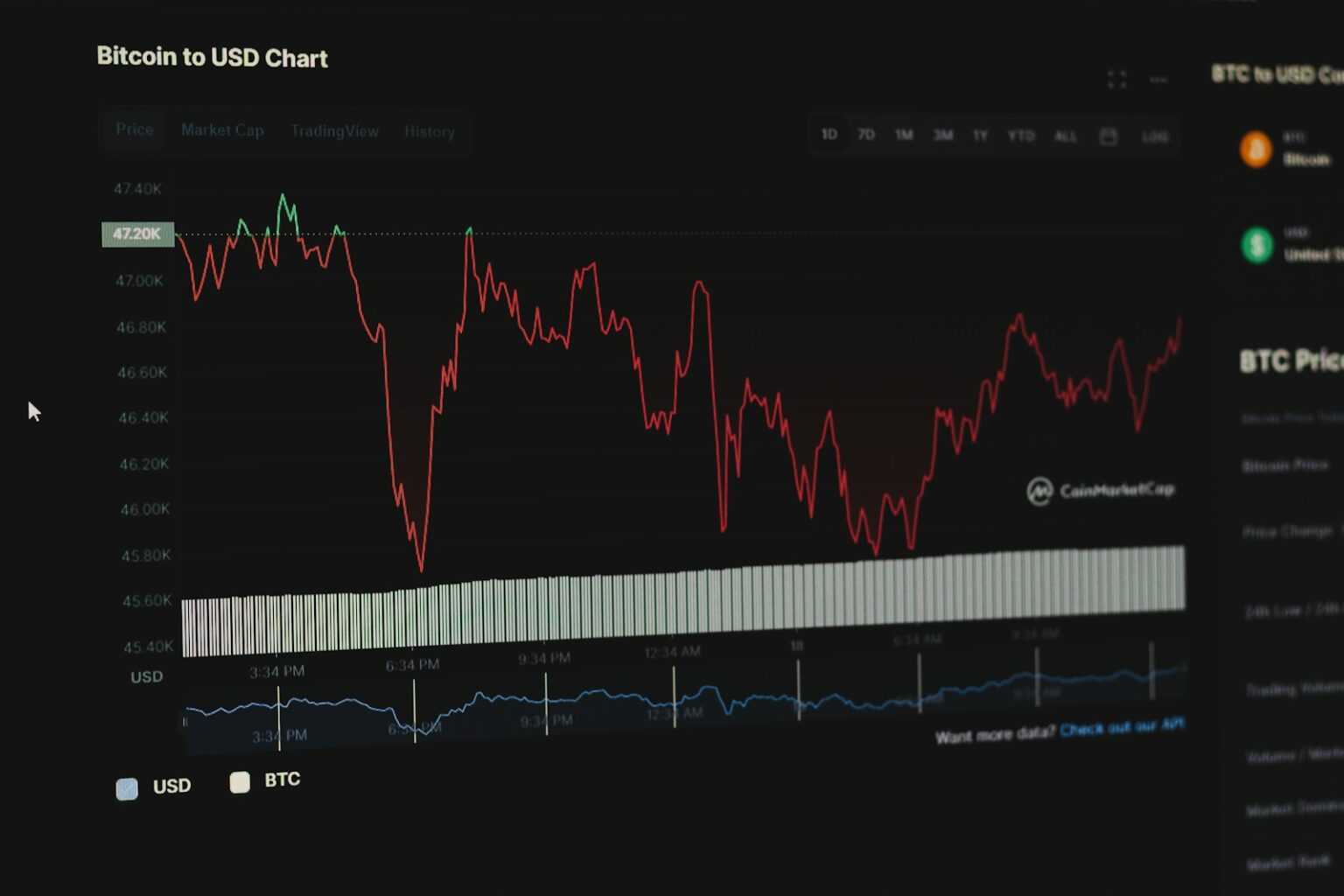To identify memory leaks and optimize application responsiveness, continuous monitoring of program execution is necessary. Profiling tools collect detailed data on resource consumption, enabling precise measurement of how different components influence overall performance. Observing the system during operation reveals bottlenecks that static code inspections often miss.
Memory usage patterns expose hidden inefficiencies such as unreleased allocations or excessive garbage collection cycles. Tracking allocation lifetimes and object retention can pinpoint sources of leaks that degrade stability over time. This approach helps maintain predictable behavior under varying load conditions.
Profiling metrics gathered during execution provide actionable insights for tuning algorithms and improving throughput. Analyzing live system traces allows correlating function call frequency with CPU utilization, thus directing optimization efforts toward critical paths. Such empirical evaluation fosters reliable software capable of sustaining high demand without degradation.
Dynamic analysis: runtime behavior examination
To uncover subtle memory leaks and optimize performance in blockchain nodes, it is imperative to conduct detailed scrutiny of software during execution. Observing how smart contracts allocate and release memory at each stage reveals inefficiencies that static code reviews often miss. For instance, Ethereum Virtual Machine (EVM) implementations may hold onto unused storage slots longer than necessary, causing increased gas consumption and degraded throughput.
Monitoring transaction processing components under load exposes critical bottlenecks affecting consensus speed and network synchronization. Tools designed for tracing function calls and resource usage provide insights into unexpected resource retention or excessive computation cycles. These findings enable targeted improvements to protocols and client software, ensuring scalability without compromising security.
Memory management challenges in blockchain clients
Memory consumption patterns in blockchain environments differ significantly from traditional applications due to immutable ledger structures and decentralized validation processes. Continuous data accumulation leads to persistent state growth, demanding rigorous observation of heap allocation during node operation. Memory profiling during live chain synchronization can identify regions where leaks accumulate, such as cache handling modules or peer communication buffers.
A case study involving Geth client revealed that poorly managed goroutine lifecycles resulted in gradual memory inflation over prolonged network participation. By instrumenting the process with specialized monitoring frameworks, developers pinpointed deadlock conditions preventing garbage collection triggers. Subsequent patches reduced peak memory usage by 30%, directly enhancing node stability under sustained loads.
Evaluating performance through temporal metrics
Quantifying computational overhead requires collecting temporal data on cryptographic signature verification and block propagation delays within running systems. Benchmarks conducted on various proof-of-stake implementations demonstrated that runtime profiling highlighted hotspots where elliptic curve operations disproportionately consumed CPU cycles. Optimizing these routines yielded a 25% acceleration in block finalization times.
- Profiling transaction pool management exposed redundant sorting algorithms inflating latency.
- Instrumentation of gossip protocols revealed excessive retransmissions contributing to bandwidth waste.
- Real-time logging enabled correlation between resource spikes and specific network events or attack attempts.
Methodologies for interactive code inspection
Employing dynamic instrumentation techniques such as Just-In-Time (JIT) tracing or sandboxed execution environments supports granular examination of smart contract logic during deployment scenarios. This approach facilitates identifying unexpected loops or recursive calls that could degrade node responsiveness or cause denial-of-service vectors. Practical experiments using tools like eBPF-based tracers empower researchers to dissect instruction-level behaviors while maintaining operational continuity.
Towards continuous observability in blockchain networks
The integration of automated monitoring pipelines capable of capturing live metrics enhances early detection of anomalies related to resource exhaustion or protocol deviations. Experimentation with adaptive thresholds based on historical patterns allows predictive alerts before critical failures manifest. For example, sudden surges in memory footprints correlated with suspicious blocks might indicate exploitation attempts targeting consensus mechanisms.
Encouraging iterative testing combined with open-source collaboration accelerates refinement of analytical frameworks tailored specifically for distributed ledger technologies. Researchers are invited to replicate measurements under varying conditions–different consensus algorithms, network topologies, hardware profiles–to build comprehensive datasets supporting resilient blockchain infrastructure development grounded in empirical evidence.
Tracing Smart Contract Execution
To precisely identify how a smart contract operates during its invocation, capturing its operational flow through live tracing tools is indispensable. Tracking instruction calls and state changes reveals potential memory leaks and unintended value transfers that static code review might overlook. Profiling the contract’s internal storage modifications while it interacts with external contracts or blockchain data ensures accurate comprehension of transient states and resource consumption.
Observing contract execution at the instruction level requires instrumentation that hooks into the virtual machine environment, enabling stepwise monitoring of opcode execution. This methodology facilitates pinpointing anomalies such as excessive gas usage or unexpected memory allocation patterns, offering granular insights into the contract’s functional dynamics. Such profiling supports hypothesis-driven debugging by correlating specific input parameters with resultant state mutations.
Methodologies for Instruction-Level Tracing
Utilizing specialized tracing frameworks like Geth’s debug.traceTransaction or OpenEthereum’s tracing APIs permits extraction of comprehensive call stacks and event logs. These tools provide ordered sequences of operations, highlighting transitions between user-defined functions and fallback mechanisms. By examining these traces alongside memory snapshots, one can detect suspicious behavior such as reentrancy vulnerabilities or unauthorized data exposure.
A practical experiment involves invoking a series of test transactions designed to stimulate edge cases–such as boundary values in loops or conditional branches–and comparing their traces to expected outcomes documented in the source code. Memory profiling within this context exposes temporal allocations that may leak sensitive information through uninitialized variables or persistent storage slots accessible beyond intended scopes.
- Memory Inspection: Monitoring temporary stack frames versus persistent storage reveals where data persists unnecessarily.
- Gas Usage Profiling: Identifying disproportionate consumption pinpoints inefficient instructions or potential denial-of-service vectors.
- Event Emission Analysis: Verifying emitted events against state changes confirms logical consistency and aids forensic validation.
The integration of these investigative steps transforms abstract bytecode into an intelligible sequence reflecting contract logic under live conditions. This approach encourages iterative refinement: modifying source code followed by targeted trace comparisons yields experimental feedback loops essential for robust smart contract development and security assurance.
Detecting Vulnerabilities Through Execution Profiling
To identify flaws that manifest during program operation, it is essential to employ continuous monitoring of software execution patterns. This approach involves tracking resource utilization and interaction sequences to uncover irregularities such as memory leaks or unexpected performance degradation. For instance, profiling tools like Valgrind or Intel VTune allow the capture of detailed instruction-level traces, revealing anomalies in heap allocation or stack usage that may lead to security compromises.
Measuring application responsiveness under various workload scenarios provides insight into potential weaknesses linked to inefficient code paths or buffer overflows. By systematically observing call stacks and system calls in real-time, analysts can detect unauthorized access attempts and data leakage events. A practical example includes detecting use-after-free errors by correlating object lifecycle events with access violations recorded during execution snapshots.
Stepwise Methodologies for In-Depth Examination
A structured experimental sequence enhances vulnerability detection accuracy:
- Profiling Setup: Instrument the target environment using performance counters and memory debuggers tailored for blockchain clients or smart contract runtimes.
- Baseline Capture: Record typical operational metrics under controlled input conditions to establish normative behavior benchmarks.
- Anomaly Identification: Introduce edge case inputs and stress tests while monitoring deviations in execution timing, memory consumption, and exception rates.
- Leak Tracing: Utilize heap analysis tools to pinpoint unreleased allocations that contribute to persistent memory bloat or enable exploit chains.
This methodological framework supports iterative refinement by enabling developers and auditors to isolate root causes behind erratic runtime states. For example, a case study involving Ethereum smart contracts demonstrated how gas consumption profiling exposed hidden reentrancy vulnerabilities tied to unbounded loops causing execution stalls.
The convergence of these techniques enables comprehensive scrutiny of software integrity beyond static code review limitations. By fostering an investigative mindset akin to laboratory experimentation–where each anomaly triggers hypothesis formulation and targeted probing–security researchers enhance their ability to preempt complex attack vectors rooted in operational irregularities within blockchain ecosystems.
Monitoring State Changes Live
To ensure accurate tracking of system modifications, implementing continuous observation of state transitions is indispensable. This approach enables precise detection of memory allocation shifts and potential data leakages by capturing the immediate effects of code execution. Employing profiling tools that record ongoing parameter adjustments allows researchers to map software performance intricacies and identify bottlenecks during active sessions.
Real-time scrutiny of computational processes reveals subtle changes in resource utilization patterns that batch inspections often miss. For instance, monitoring live state alterations within blockchain nodes provides insight into transaction validation delays and smart contract execution anomalies. Such persistent oversight facilitates early identification of inefficiencies affecting throughput and consensus protocols.
Techniques for Capturing Live State Modifications
The application of trace instrumentation combined with memory snapshotting forms a robust methodology for observing live system changes. Techniques such as event-driven hooks or polling intervals capture snapshots of critical variables without imposing significant overhead on the host environment. Profiling frameworks like eBPF (extended Berkeley Packet Filter) offer granular visibility into kernel-level operations, enabling assessment of runtime performance metrics alongside resource consumption.
Memory profiling tools help detect leaks by comparing successive snapshots, highlighting persistent allocations that do not correspond to active processes. Dynamic tracing utilities facilitate correlation between function calls and their impact on global state, revealing causality chains behind unexpected outcomes. The use of these methods in blockchain environments assists in verifying that state transitions comply with protocol rules and do not introduce vulnerabilities.
- Event tracing: Captures asynchronous events influencing system variables.
- Snapshot comparison: Identifies discrepancies in memory usage over time.
- Profiling hooks: Instruments code segments to gather fine-grained data.
Performance profiling extends beyond CPU cycles, encompassing input/output latencies and concurrency effects. Monitoring thread states during live execution can uncover race conditions or deadlocks impacting overall efficiency. Combining temporal data with spatial memory maps generates comprehensive profiles that guide optimization efforts in complex distributed systems such as decentralized ledgers.
The assessment of ongoing state fluctuations requires balancing depth of insight against perturbations introduced by monitoring itself. Excessive instrumentation can distort normal functioning, causing false positives or masking genuine issues. Hence, iterative refinement of observation parameters through controlled experiments is recommended to establish minimal intrusiveness while preserving accuracy.
This experimental approach encourages formulation of hypotheses regarding causal relationships between code segments and observed system states. By systematically manipulating inputs and configurations, one can validate assumptions about resource contention or algorithmic inefficiencies driving suboptimal performance metrics. Such investigative rigor fosters confidence in deploying resilient blockchain infrastructures capable of handling diverse operational demands without compromising integrity or speed.
Conclusion
Profiling gas consumption reveals critical inefficiencies in smart contract execution, where unexpected memory leaks and suboptimal code paths inflate costs during transaction processing. A detailed investigation of consumption patterns uncovers hotspots linked to excessive storage operations and redundant computations, directly impacting protocol performance under load.
Systematic evaluation through incremental instrumentation allows developers to isolate costly functions by tracking state changes and opcode utilization across various invocation scenarios. For instance, contracts with nested loops or frequent external calls exhibit disproportionate gas spikes that can be mitigated by restructuring logic or caching intermediate results. This approach transforms the assessment of contract efficiency from a static checklist into an iterative optimization experiment.
Key Insights and Future Directions
- Memory management anomalies: Identifying persistent storage usage beyond necessity points toward latent resource drain, which profiling tools must detect early to prevent escalating expenses during extended contract lifecycles.
- Adaptive instrumentation: Incorporating fine-grained event tracing within execution environments enables dynamic observation without significant overhead, facilitating near real-time feedback on computational cost distribution.
- Algorithmic refinement: Analyzing gas profiles encourages exploration of alternative data structures and control flow paradigms aligned with blockchain constraints, fostering innovation in low-cost contract design.
- Cross-layer synergy: Linking consumption metrics with network conditions and consensus mechanisms offers a holistic view, guiding optimizations beyond individual transactions toward systemic scalability improvements.
The trajectory of profiling advances suggests integration with machine learning models capable of predicting cost anomalies before deployment. Experimentation with such predictive frameworks holds promise for preemptive identification of inefficiencies, enabling proactive refactoring and more sustainable smart contract ecosystems. Encouraging readers to replicate stepwise profiling experiments cultivates a deeper understanding of resource dynamics, turning abstract gas metrics into tangible insights ready for scientific inquiry.








